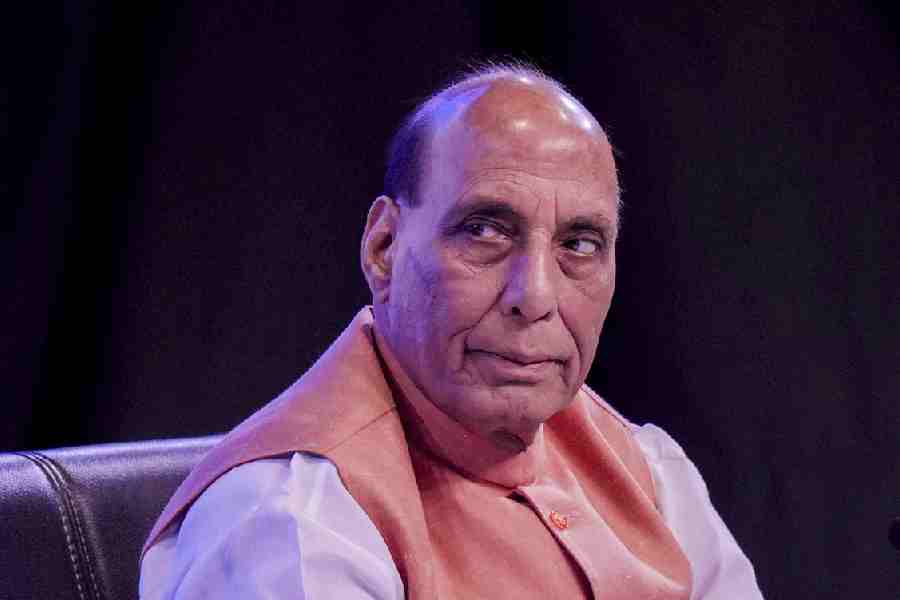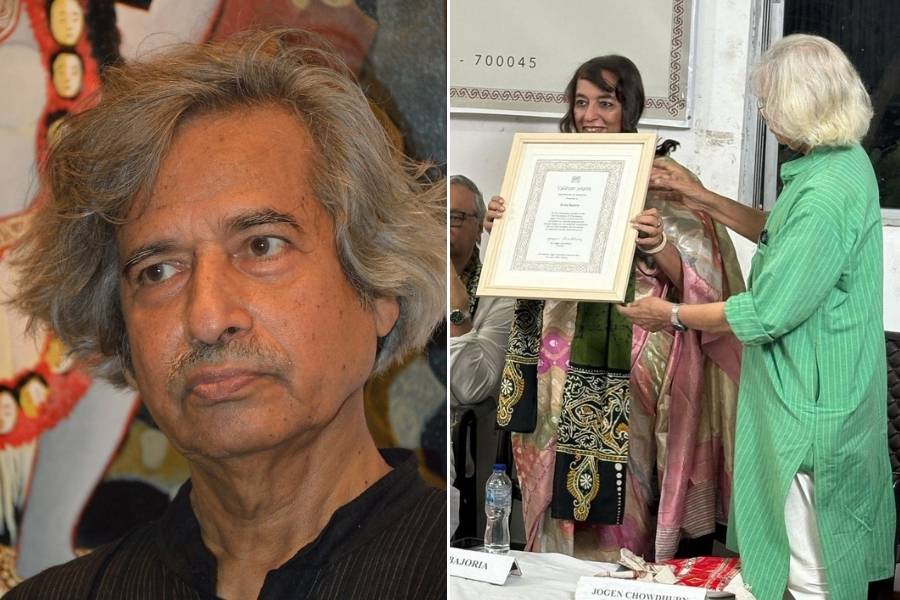 |
 |
It has been a busy season for artist Yusuf Arakkal. For months he has been putting brush to canvas, working on a series of 18 paintings. The results of his labours have gone into a limited edition coffee-table volume called The Book.
The glossy pages of the volume are filled with an eclectic collection of works like Gauguin?s woman, Vermeer?s lace maker, Picasso?s boy, Modigliani?s nude, Van Gogh?s boots and Munch?s girl ? and, of course, the artist?s own works.
?The book is literally my book of references. I have been inspired by the work of Picasso, Munch, Van Gogh and others. The book is an attempt to understand and interpret their work,? says Arakkal.
Arakkal?s book isn?t an ordinary coffee-table volume. There are only 20 copies in print. Predictably, however, they?ve all been snapped up by art lovers and Arakkal loyalists. The 18 paintings that he created over the last few months were displayed at a show called The Open Book in Mumbai recently. Says the artist, ?The idea germinated when I was working on an eight-page book for the Asiatic Society, Mumbai. The project went off well and I thought why not make a series, which will incorporate mine as well as the work of other greats.?
Loneliness and apathy have always been the underlining themes in Arakkal?s work. The repetitive figure of a man /child/human form is his signature style. ?A figure which may or may not be,? laughs Arakkal.
The series which took a year to create has been a novel experience for Arakkal. The painter says he?s normally very impatient and eager to complete his work. This time round it was slightly different. ?I am very impatient when I am painting. I am always itching to finish and relax. But this series was a meditative experience. I would sit for hours looking at the watercolours, the computerised prints and other elements before getting down to work. In that sense, I would say that the series has had a calming effect on me.?
Arakkal has had a life filled with ups and downs. He says that his work is primarily propelled by his own personal experiences and memories. And he believes that he learnt the most important lessons of life by leaning on dilapidated lamp posts, crouching on broken benches, wiping wobbly tables and slumbering on unkempt pavements.
He still recalls, for instance, sleeping on the footpath on a cold winter night when the only warmth came from another person sleeping nearby. Next morning, he says, the gentle understanding smile on the leper?s face conveyed a new meaning. To this day, the silent encounter remains sharp in the artist?s mind.
Arakkal was born into the royal Arakkal family in Trichur but his parents both died when he was very young. He was brought up in the lap of luxury, and excelled in everything ? studies, football, painting and writing. But at 15, ?something inside me made me run away from home. With just Rs 30 I bought a ticket to Bangalore and there I got lost as the rickshaw driver took me for a drive. With no money and no friends I spent one-and-a-half years on the streets of Bangalore. It was my greatest learning experience and this aspect does creep into my art,? says Arakkal, who has now made Bangalore his home.
Among the top league of artists, Arakkal?s work has been showcased both in India and abroad. He has a varied list of interests and chief among them is writing for the many newspapers.
Speaking as an art critic and columnist Arakkal believes that Indian art is definitely on the upswing. ?Young Indian artists have it much better than we did. A lot of art galleries and buyers are willing to risk their money on these newer artists. Also, the younger lot is far more aware and well-read as compared to their contemporaries ? a result of increased globalisation and awareness,? he says.
Nevertheless, he?s slightly wary of market forces and says they aren?t always a reliable indicator of art credibility. For the time being, he?s taking it slightly easy before starting out on his next project. What will that be? He says thoughtfully, ?It may be some thing different. Because repetition is the easiest way for an artist to die.?
Photograph by Gajanan Dudhalkar










